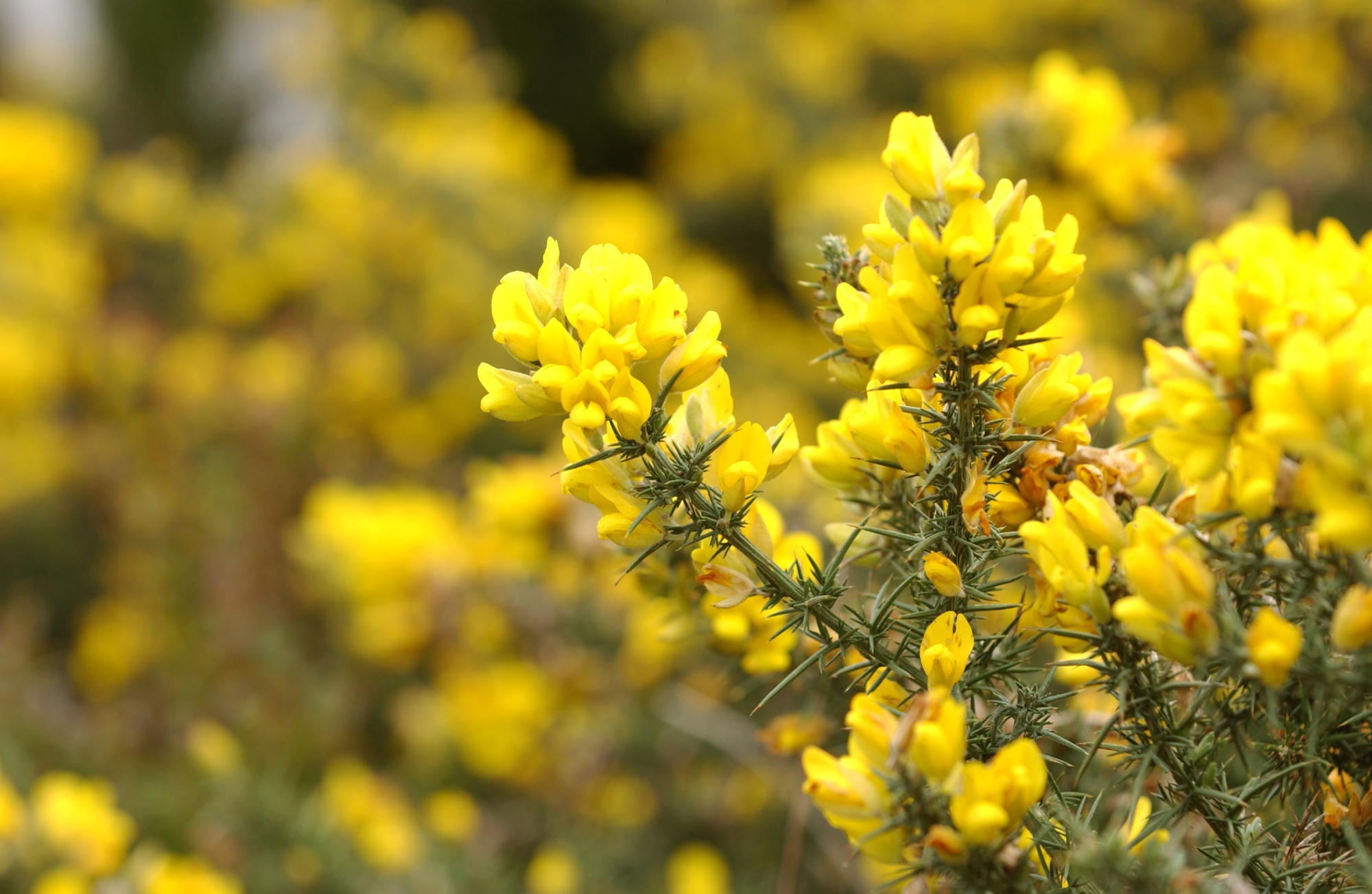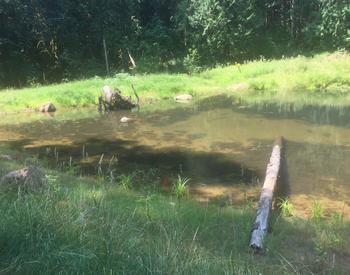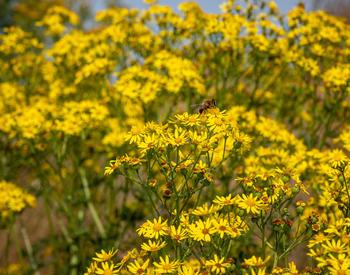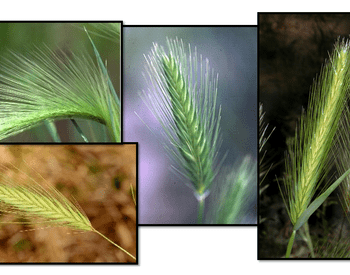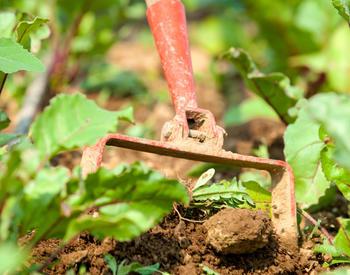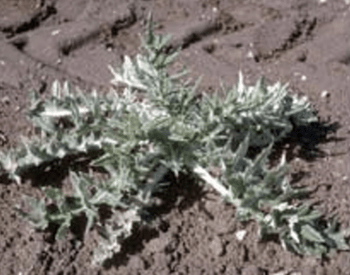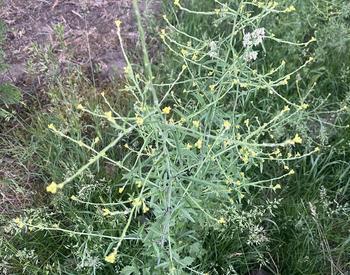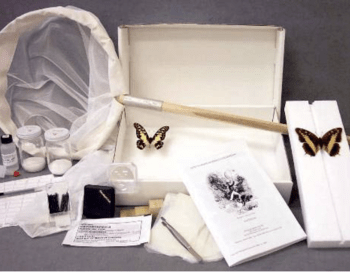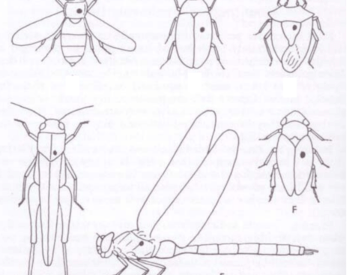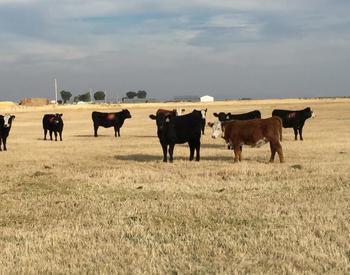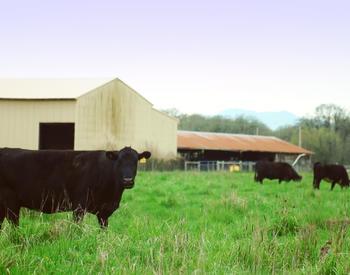Taking an integrated pest management approach to weed control involves using a combination of cultural, biological, mechanical, genetic and chemical control methods for weed management. The benefits of an integrated management approach include:
- Fewer resistant weeds.
- Lower negative environmental impacts.
- Sometimes reduced costs for farmers.
When used correctly, organic or synthetic herbicides can be a useful part of an integrated weed management program. Selecting and applying the appropriate herbicide(s) for your IPM program can be challenging, so we will focus on key considerations for herbicide selection and use on farms.
Herbicide selection
The first step in selecting herbicides to control the weeds on your farm is to consider your management goals: Are you managing organically or conventionally? Do you want to eliminate all weeds or preserve some species as habitat for beneficial insects?
Herbicides can be broad spectrum (also known as nonselective), meaning they target a wide range of plants. Acetic acid is an example of a broad-spectrum organic herbicide that kills grasses, sedges and broadleaf plants. Alternatively, herbicides can be narrow spectrum (or selective), targeting only the plants in a specific category (like 2,4-D, a synthetic herbicide that kills only broadleaf plants).
To choose the right herbicide for weed control, it is important to correctly identify the weeds you're targeting. Some resources to help with weed identification are:
- The Oregon State University Weed Identification Service.
- The University of California Integrated Pest Management Weed Photo Gallery.
- Pl@ntNet cell phone application.
Once you have identified your weeds, you can select a chemical control method that works together with cultural, biological, mechanical and/or genetic control methods you’re using on your farm to safely and effectively control weeds. The Pacific Northwest Weed Management Handbook is a great resource for identifying appropriate herbicides for controlling different weeds. In addition to providing the name of the active ingredient in the herbicide, it also states the trade name and information about application rate, timing and safety.
Herbicide application
When using any type of herbicide, keep the following best practices in mind.
Herbicide rotation
Using the same chemical over and over leads to faster emergence of resistant weeds on your farm. Alternate herbicides with different active ingredients to reduce the likelihood of weeds developing herbicide resistance.
Tank mixing
When done correctly, it is often more cost- and time-effective to apply more than one chemical (multiple pesticides, amendments, etc.) through the same tank spray. When tank mixing, make sure that:
- The chemical and physical properties of the products that you are mixing are compatible.
- You add them to your tank in the right order.
- The water you’re adding to the tank is the right pH and hardness.
The best way to check this is to read the labels of all products you’re considering for your tank mix. For more information on tank mixing, see Avoid Tank Mixing Errors from Purdue Extension.
Adjuvants
Adjuvants often should be added to your herbicide sprayer to improve the effectiveness of your application. These include things like:
- Surfactants, which make the herbicide stick to the plant.
- Crop oil concentrates, which make the herbicides more easily taken up by the plant.
- Nitrogen fertilizers, which can increase the activity of an herbicide.
Read the herbicide label and consider the cost of the adjuvant to decide whether to include it in your tank mix.
Herbicide safety
Organic and synthetic herbicides can be powerful tools in your IPM toolbelt. However, both organic and conventional herbicides can be toxic to the applicator and the environment when applied incorrectly. You can learn more about pesticide application safety in more detail in other articles. For now, keep the following important safety points in mind when considering chemical applications:
- The label is the law. Always read the label and follow the instructions when mixing, applying and storing herbicides.
- Wear personal protective equipment (PPE) whenever you are handling herbicides. The label includes information about what types of PPE are recommended for each herbicide.
- An Oregon pesticide applicator license is required when buying, applying, supervising the use of or advising others to use restricted-use pesticides. You can find more information about when a pesticide applicator license is needed and prepare to obtain one through OSU's Pesticide Safety Education Program.
Please note that the pesticide application and safety information included in this article is not meant to be a comprehensive guide on the topic. Rather, the goal of the information in this article is to provide a starting point for learning and decision-making on herbicide application.
¡Use los pesticidas con seguridad!
- Póngase ropa de protección y equipo de seguridad según las recomendaciones de la etiqueta. Báñese después de cada uso.
- Lea la etiqueta del pesticida—aunque lo haya usado antes. Siga al pie de la letra las indicaciones de la etiqueta (y cualquiera otra indicación que Ud. tenga).
- Tenga precaución al aplicar los pesticidas. Conozca su responsabilidad legal como aplicador de pesticidas. Usted puede ser responsable de heridas o daños resultantes del uso de un pesticida.
